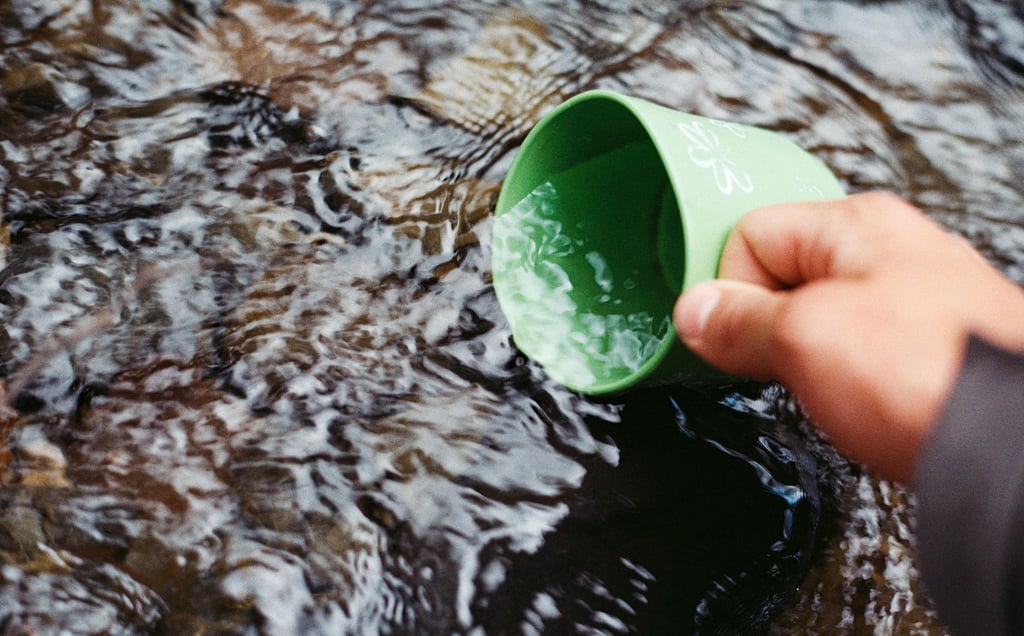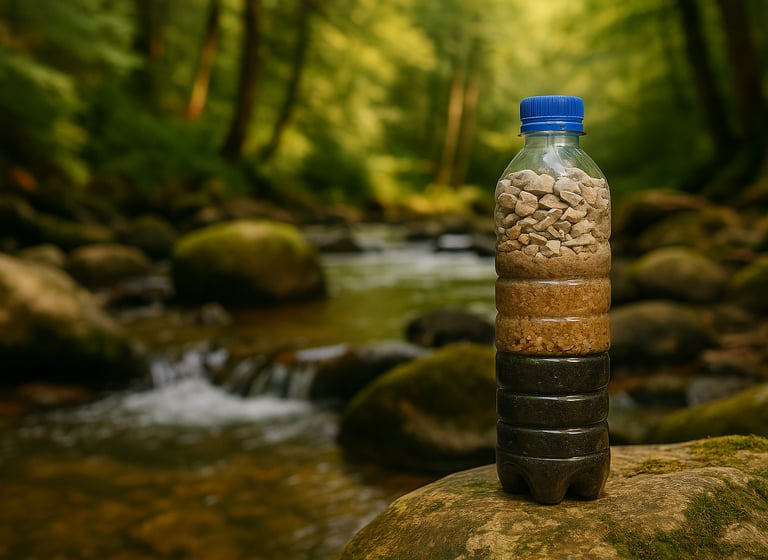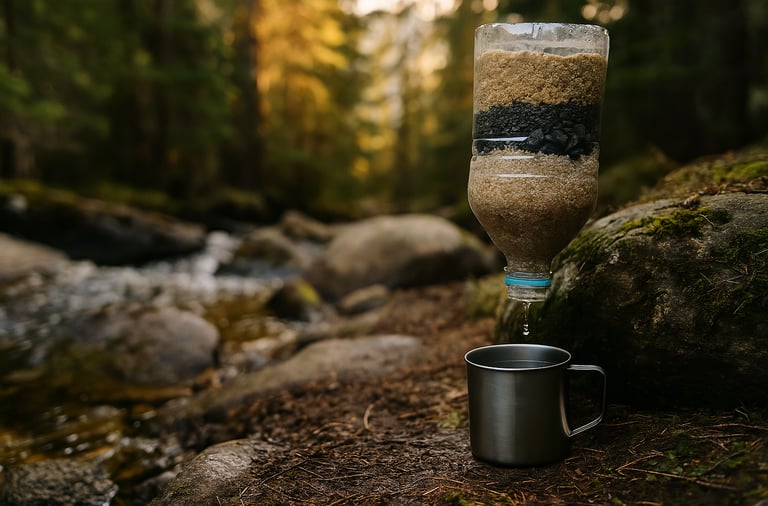DIY Survival Water Filter: How to Build One in the Field
Learn how to make a DIY survival water filter using natural materials. A must-know skill for survivalists, hikers, and anyone preparing for off-grid emergencies.


DIY Survival Water Filter: How to Build One in the Field
Why Learn to Make a DIY Water Filter?
If you're ever caught in the wild without a commercial water filter, knowing how to make a DIY survival water filter could literally save your life. Natural water sources like streams or lakes might look clean, but they often contain harmful microorganisms, bacteria, and debris that can make you very sick. That’s where homemade water filtration becomes an essential survival skill.
Creating a basic field water filter isn’t as complicated as it might sound. With the right materials and a bit of know-how, you can drastically improve the safety of collected water. This method doesn’t completely purify water — boiling or chemical treatment is still recommended after filtration — but it’s a strong first step to make contaminated water safer to drink.
Materials You'll Need to Build a Field Water Filter
The good news is that many of the materials needed to build a water filter in the wild can be found around you or in your pack. A typical DIY survival water filter consists of a container like a plastic bottle, or tree bark, and a series of layered materials to trap dirt and harmful particles. The most effective layers usually include gravel, sand, charcoal (from your fire), and some kind of cloth to act as a pre-filter.
To assemble it, start by cutting the bottom off your bottle or hollowing out a section of tree bark. Place cloth or cotton at the bottom as the final layer. Next, layer in crushed charcoal, followed by fine sand and then small gravel at the top. Pour your collected water through the filter slowly and let gravity do the work. The filtered water should come out clearer, but remember — you'll still need to boil or chemically treat it to remove pathogens.
How Effective Are Homemade Water Filters?
DIY field water filters are surprisingly effective at removing large particles, dirt, and some bacteria. However, they are not a complete purification method on their own. These filters do not remove viruses or microscopic pathogens unless combined with boiling or disinfection tablets. That said, filtering out sediment makes boiling or chemical treatments more effective and helps improve taste.
Also, keep in mind that the quality of your materials matters. Activated charcoal works better than raw fire charcoal, and using clean sand and gravel is always best when possible. If you plan to rely on this method often, practice building one ahead of time so you're not trying it for the first time under pressure.
Once your water looks clean, don’t stop there - boiling vs filtering is a decision every survivalist should understand. You can also explore how to purify water without a filter in case materials for this DIY method aren't available.
Why This Skill Belongs in Every Survival Kit
Learning how to build a DIY water filter is more than a bushcraft trick — it’s a potentially life-saving technique. In remote or off-grid situations, having the confidence to create your own water filtration system from natural materials can keep you hydrated and healthy. Even if you carry commercial gear, knowing this backup method ensures you're never without options.
Add this to your wilderness skill set and take time to practice it in different environments. The more familiar you are with the process, the quicker and more efficient you’ll be when it really counts. Clean water is non-negotiable in any survival scenario, and with this knowledge, you’re one step closer to self-reliance.




© 2025. All rights reserved About | Privacy Policy | Terms and Conditions | Affiliate Disclosure | Disclaimer


